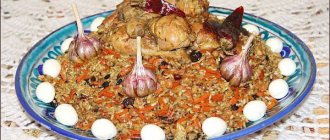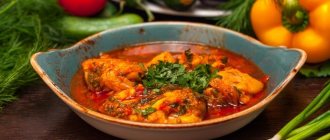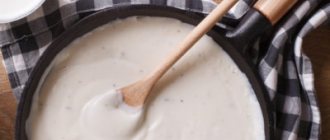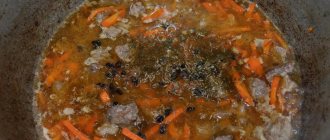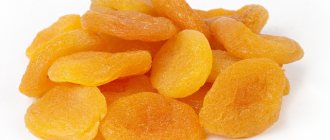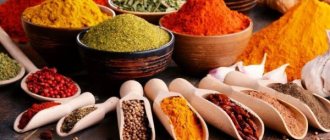Any cook will tell you that the right pilaf is aromatic, beautiful, and crumbly. And for it to really turn out like this, it is important to know what kind of rice to buy for pilaf. Not only the taste, but also the appearance and consistency of the dish depends on this. If stickiness is quite acceptable for porridge, then pilaf will lose its culinary value. Only by taking high-quality cereals, which are made specifically for such an occasion, can you prepare a culinary masterpiece.
What kind of rice is needed for pilaf: selection criteria
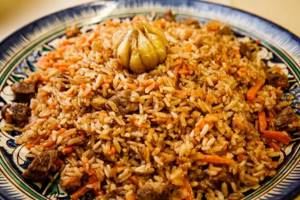
First of all, this concerns not only the process itself, but also the correct choice of cereals. The final result depends on what type and even the specific variety is used. Rice for pilaf must meet the following characteristics:
- the cereal does not stick together during cooking;
- the grains remain dense, hold their shape, do not stick to each other, but retain their flowability;
- rice absorbs the aromas of spices and fats well;
- the pilaf is painted in a beautiful color.
The friability depends on the amount of paste: the more of it, the more the dish will stick together. For rice, long-grain varieties are most often used, rather than round ones. The latter have more paste, although among them there are several varieties that make excellent pilaf.
Beneficial properties of rice
Rice is very rich in vitamins C, A, B, carbohydrates, amino acids, proteins and minerals.
- For those who lead a healthy lifestyle, rice is an excellent choice.
- Dietary dishes are often prepared from it.
- Thanks to its amazing composition, this cereal helps strengthen the human nervous system.
- It can provide a person with a large charge of energy for a long time.
- Since rice contains virtually no salt and helps remove it from the body, doctors recommend it for consumption by people who suffer from kidney and cardiovascular diseases.
- Rice acts as an absorbent; it is like a sponge, absorbing all harmful substances, cleansing the body of toxins. Rice water is recommended for use in case of high fever, poisoning and loose stools.
- This cereal is also recommended by doctors for those people who suffer from excess weight and want to lose weight without any harm to health.
Rice for pilaf - the best types
Cereal grains come in not only different varieties, but also different types. Before being sent for sale, rice undergoes certain processing. The quality of the cereal depends on what it is like.
Three types of rice are usually used for pilaf:
- white;
- brown;
- steamed.
How do these varieties differ from each other?
White rice
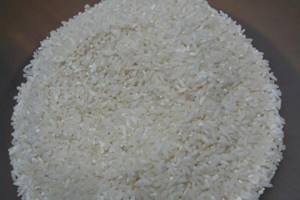
It is easy to recognize by the beautiful snow-white color of the grains, which are slightly translucent. This effect is achieved through careful grinding of the grain. By the way, that’s what they call rice – polished. As a result of the procedure, the grains are completely cleared of husks and turn white. There are both round and long grain varieties of white rice. This grain has a long shelf life, and pilaf from it is prepared quickly, in just a quarter of an hour.
Despite a number of advantages, polished varieties also have a disadvantage. They retain very few nutrients.
Brown rice
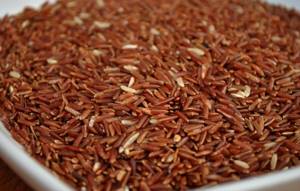
The most useful type, consisting of unpolished grains of a brownish color. Minimal processing allows you to preserve the maximum of microelements and beneficial properties of the cereal. In addition, brown rice also has a special taste and smell. Pilaf from it acquires an interesting nutty aftertaste with the same aroma. It takes a little longer to cook than white rice - half an hour, but it is low in calories.
The downside of brown rice is its fairly high price. And it doesn't last long.
Parboiled rice
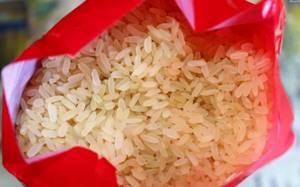
The translucent grains have a golden hue, but during the cooking process they turn completely white. Steaming cereal allows you to retain more nutrients. This rice takes up to 30 minutes to cook, just like unpolished rice. But at the same time it does not need to be pre-soaked for a long time.
Perhaps, besides the high price, parboiled rice has no disadvantages.
Your choice
Pilaf is very demanding when it comes to rice and spices. Don't try to cook a delicious dish if you only have short-grain rice for porridge. It cooks well and makes a delicious milk porridge. But in this case you need to keep the grains of rice intact. So try to choose long grain, And don't forget about the meat! Which one is better for pilaf?
In this regard, the dish is quite democratic. Almost any meat you have in your refrigerator will work for this purpose. Sometimes even... fish is used. But we should not forget that the taste of the finished dish will depend on the choice. Avoid meat from young animals. It quickly disintegrates into fibers and loses its taste.
Which rice is better to make pilaf from: varieties
Each country has its own brands that produce different cereals, including rice. So, most often you can find on our shelves the products of Zhmenka, Mistral, Agro-Alliance. There is no point in arguing which company is better, because what kind of variety it offers is much more important. And there are a huge variety of them, but not all of them make excellent pilaf.
Among the range of cereals for preparing aromatic and crumbly pilaf, it is better to choose the following varieties of rice:
- Jasmine. Each grain of rice has a characteristic groove and has a floral aroma and aftertaste. The pilaf has an original taste and is free-flowing.
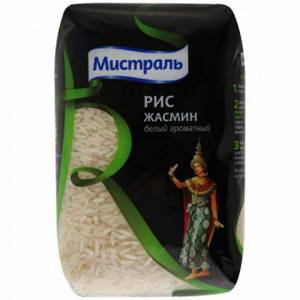
- Pathumthani. Another variety with a floral aroma, but cheaper than the previous one.
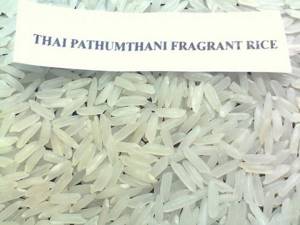
- Aquatics. Long grain rice, characterized by the fact that it takes the longest to cook, even if the grain is soaked. But in the end the dish does not suffer from this, quite the contrary. The downside of this variety is its high price.
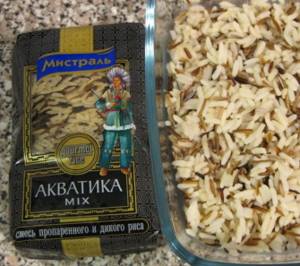
- Basmati. Cereals from India are also quite expensive. The grains are hard, long and thin, milky in color. They retain their shape when cooked and at the same time lengthen even more. They do not stick together and perfectly absorb fat, juice and spice aromas.
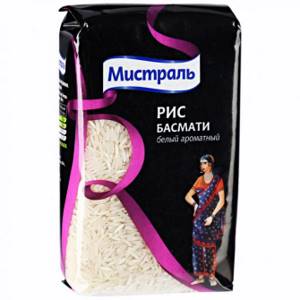
- Laser. The grains are long, white, starchy and soft. The variety is distinguished by the fact that it quickly absorbs water. This allows you to get by with minimal soaking time. Rice takes no more than 40 minutes to cook. The pilaf comes out tender, but crumbly.
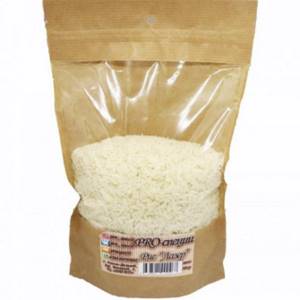
- Indica. The grains are long, up to 6 mm, and do not stick together during cooking.
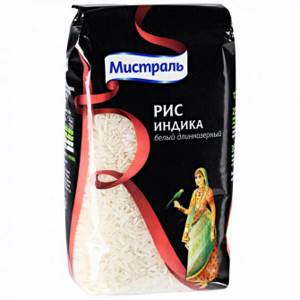
- Camolino. One of the few round-grain varieties that are suitable for pilaf and retain their flowability when cooked.
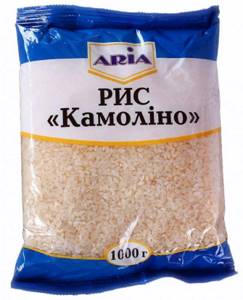
Excellent pilaf is made from black rice, and it cooks quickly - only 45 minutes. But the price for such cereals is steep. The cereal is grown mainly in Tibet and is subjected to special processing.
Seasoning for pilaf with barberry
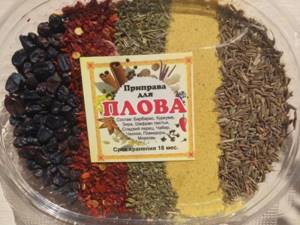
Dried barberry goes well with lamb, the only true meat for pilaf, according to Uzbeks, which is why mixtures based on this berry are very popular. This does not mean that other types of meat do not combine well with it: barberry is added to pork, beef, turkey, duck and chicken; can be used either alone or mixed with other spices.
Advice: if you have never eaten such pilaf before, it makes sense not to experiment and pour just a pinch of barberry into the zirvak for the first time, and then taste the broth.
You can also make the seasoning yourself - to do this, grind the dried fruits through a meat grinder, crush them in a mortar or grind them in a coffee grinder. The rest of the spices, especially cumin, can be subjected to the same procedure so that it gives more flavor.
Which rice is best to use for Uzbek pilaf?
Pilaf is considered the national Uzbek dish. In this country, everyone knows how to cook it, as well as what grains are needed to obtain the desired consistency.
The most delicious Uzbek pilaf is obtained from the following varieties:
- Devzira. The grain can be milky or darker, almost brick-colored. It is heavier in weight than other varieties due to special processing. The grains are alternately moistened and dried over several years. But then during the cooking process they increase 7 times. The pilaf does not stick together even after cooling, but the rice must first be soaked for a couple of hours.
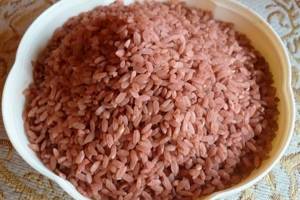
- Chungara. It is a subspecies of Devzira, but contains more starch. After rinsing, the starchy grain turns into excellent opaque rice. The dish comes out tasty and airy.
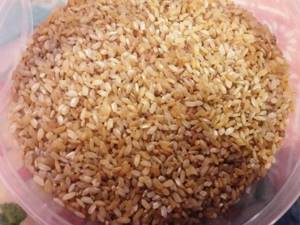
- Dastar is a saryk. An excellent variety that absorbs aromas, spices and fats well. The grains do not stick together, and during the cooking process they increase 3 times in volume.
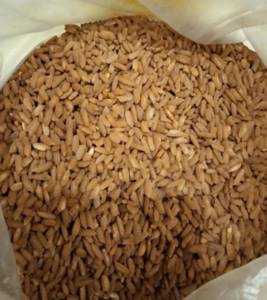
- Alanga. One of the round-grain varieties that do not require soaking. A simple rinse will be enough. The rice grains are small but dense; they double in size when cooked and absorb water well.
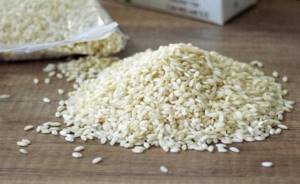
☝ What to look for when buying rice
The best variety is “Devzira”, as it was bred specifically for preparing pilaf. But along with its popularity, the number of fakes has increased, so you need to know what to look for when choosing a product.
- Take some grains in your palm and rub them. The real ones will crunch.
- The cereal should be heavy in weight, but dry. This is an indicator of good water absorption.
- Taking the grain in your hands, wipe off the brown dust. There should be a brown streak that cannot be washed off by hand and does not dissolve in water.
- Bite the grain. If this works, then this is a fake.
Rice for pilaf: should it be washed and soaked?
Regardless of which variety is used, the cereal must be washed. And not just once, but until the water becomes clear. Cloudy water is starch that is washed off from the grains. It is this that glues the grains of rice together during cooking, which means it is not needed in pilaf. The starchy film on the grains also prevents them from being saturated with water, fat, and the aromas of spices. Therefore, you need to rinse the cereal until the water is no longer cloudy.
Long grain rice should be washed very carefully - it is easy to break.
All varieties should be washed, but most still need soaking. This procedure allows you to reduce the cooking time of pilaf. The swollen and water-filled grain will cook less.
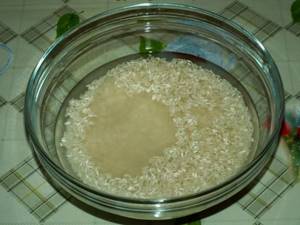
How long the soaking will last depends on the specific type and variety of rice:
- for soft varieties like Lazarus, 15–30 minutes are enough;
- hard rice such as Basmati and Devzira need at least 2 hours;
- Black and wild rice should be soaked overnight.
But there is one rule common to all varieties of rice, and it concerns water temperature. It is necessary to soak rice only in hot water, about 65 ° C. Not in cold water - the rice grains do not absorb it well, and then, when cooked, they crack. And not in boiling water - then a glutenous film forms on the grains, preventing the absorption of aromas.
Useful tips to help you achieve soft and juicy meat in your finished pilaf
- If you moisten the meat with water an hour before cooking pilaf, it will become much juicier.
- It is not recommended to salt meat at the very beginning of the cooking process. Since salt draws out moisture, the meat will become tough. You need to salt the dish either at the very end of cooking or in the middle of the process. This rule does not apply to marinades.
- Beef or lamb will turn out soft and tender if before baking the meat is salted, peppered, often chopped with garlic, and carefully wrapped in a banana peel, secured with kitchen thread, placed on a baking sheet and baked in the oven at a temperature of one hundred and eighty degrees for forty minutes. Banana peel can make tough meat very soft. With such meat, pilaf will turn out simply delicious. You can also turn tough meat into tender meat by frying it in very hot oil for five minutes. Then add a little water, cover with a lid, add chopped ginger root and simmer for thirty minutes. Next, the finished meat can be used to prepare pilaf.
- Dry old meat is perfectly softened by lemon peel. It is necessary to cut the lamb or beef across the grain, place it in a hot frying pan and fry for five minutes. Add water, finely chopped lemon peels, and simmer for thirty minutes. At the end of cooking, crush the lemon rinds together with the released meat juice and add to the pilaf. Meat prepared in this way is perfect for preparing delicious pilaf.
How to maintain the correct proportions of cereals, meat, vegetables and water
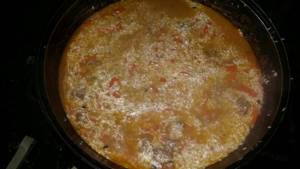
With meat and vegetables everything is simple. The classic recipe for real Uzbek pilaf stipulates that everything should be equally divided. That is, the main ingredients of pilaf (rice, meat, carrots) should be in equal proportions, for example, 1 kg each. However, no one forbids changing them in one direction or another. You can take less meat, but more vegetables. Or reduce the proportions of cereals in favor of the same vegetables. And absolute freedom in terms of spices: it can be either a traditional set of spices for pilaf or individual solutions.
But when it comes to water, it is important to maintain the correct proportions. If you add more, even the best rice will turn out not to be pilaf, but to be a viscous porridge.
Each variety has its own ratio of cereals and water:
- round rice - filled with water 1:1;
- steamed varieties, pre-soaked - also 1:1, and laid dry - 1:2;
- Basmati – 1:1.3;
- Devzira – 1:2;
- brown rice – 1:3;
- black rice – 1:4.
Which rice is best for pilaf, each housewife decides for herself, testing different varieties. Some people prefer a soft and tender dish, others prefer that the grains of rice remain elastic. But culinary experts agree on one thing: pilaf should crumble, smell delicious and look appetizing. And this result can only be achieved by taking the right grains and following the cooking technology. However, this is not at all difficult, you just need the desire to please yourself and your loved ones with a delicious dish.
Uzbek pilaf - how to cook it correctly and tasty?
The country of Uzbekistan is considered the ancestor of pilaf, since this dish was most widespread there. It is the local residents of Uzbekistan who have all the subtleties and nuances of preparing real Uzbek pilaf. Classic Uzbek pilaf consists of such ingredients as: meat, water, rice, onions, fat, carrots.
Ingredient proportions:
- One and a half kilograms of lamb meat;
- Round or long grain rice one kilogram;
- Vegetable oil, fat one hundred and fifty grams;
- Big five carrots;
- Five large bulbs;
- Garlic two heads;
- Spices to taste;
- Water.
Cooking process
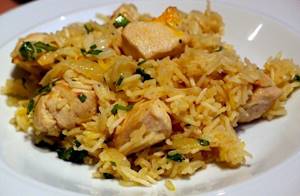
It is very important that the rice is not steamed in advance; you can use a variety of meats, it can be pork, beef, lamb. In order for the meat to be juicy and the finished pilaf rich, it is recommended to cut the pieces coarsely, about two hundred grams each.
To prepare real pilaf, every detail is important during the cooking process, and even how the vegetables are cut. The onion should be cut into half rings, the carrots into large strips lengthwise. Vegetables cut this way do not overcook as much. Real and properly prepared pilaf loves various spices: cumin, black pepper, turmeric and barberry are great, as well as garlic.
How to cook pilaf correctly: stages of preparing ingredients
- Pour the rice into a saucepan, add salt and pour boiling water over it. Give the grains some time to swell.
- Chop vegetables and meat.
- Pour fat or oil into a cauldron and place over medium heat. When the oil is as hot as possible, fry the pieces of meat in it until delicious and golden brown. Add onion, sauté until golden brown. Add carrots, mix everything thoroughly, and fry until golden brown. Pepper, salt and season with all spices.
- Add hot water to the cauldron, so that the ingredients are only slightly covered with liquid. Simmer the contents of the cauldron over low heat.
- Place the water for the pilaf to boil over high heat.
- Carefully drain the salt water from the rice. Rinse the rice well with warm water.
- Grind the cereal to avoid rice sticking together in the future.

